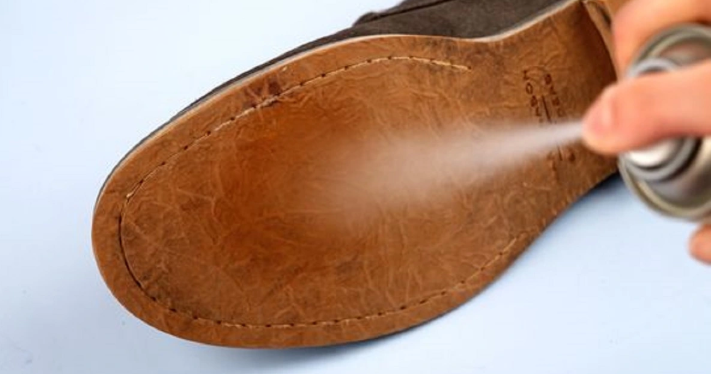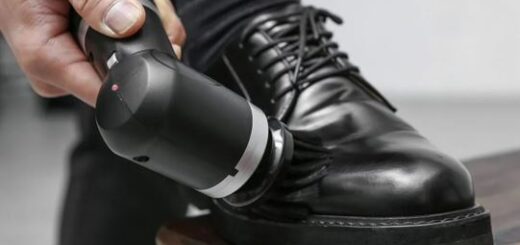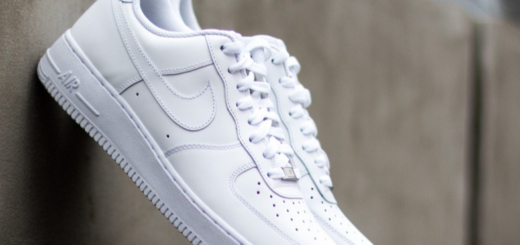Slip-Resistant Shoes: 10 Smart Ways to Prevent Falls and Boost Traction
Safety is often an overlooked aspect of footwear until an accident happens. Whether you’re a chef, janitor, nurse, warehouse worker, or just someone walking on a rainy day, the grip beneath your feet can make the difference between balance and a fall. Slip-resistant shoes aren’t just for workplaces—they’re essential wherever surfaces can be slick or unpredictable. This guide explores how slip-resistant shoes work, how to improve traction on any shoe, and why the right sole can protect more than just your step—it can protect your health.
Simple Tricks to Boost Traction
Use Grip-Enhancing Sprays
A quick way to make any sole more secure is with a grip-enhancing spray. These sprays increase surface friction, helping shoes better adhere to slick floors. Just a few sprays can upgrade your favorite shoes without compromising their appearance or comfort.

Hairspray Hack for Better Grip
An unexpected ally in your battle against slippery surfaces is hairspray. Lightly coating your soles with it can give your shoes a temporary sticky quality, improving traction for a few hours—perfect in a pinch when you’re caught off guard by wet floors.
DIY Paste: Rubber Adhesive and Salt
Combine rubber cement and coarse salt to create your own slip-resistant coating. The salt adds rough texture, while the glue binds it to the sole. Spread this mix across the outsole and let it dry thoroughly before wearing. It’s a handy and budget-friendly alternative.
Carve Shallow Grooves
Shoes with smooth soles tend to slide more easily. You can reduce this risk by carefully scoring shallow lines across the sole using a knife or similar tool. These channels can disperse water and debris while increasing grip.
Add Ice Traction Accessories
For icy winters or frozen ground, removable traction grips fitted with tiny spikes can attach over your shoes. They’re reusable and ideal for walking on snow-covered sidewalks or icy driveways without investing in a new pair of winter boots.
Scuff the Sole with Sandpaper
Brand-new shoes often have too-smooth soles. Rubbing sandpaper over the base can create tiny abrasions that provide additional grip. This method is fast, simple, and effective for casual or fashion footwear.
Upgrade the Sole Entirely
If you’re committed to improving a shoe’s long-term traction, consider getting the soles professionally replaced. Many cobblers can apply a slip-resistant sole to your favorite pair of shoes, especially if you love the upper but find the bottom lacking.
Reinforce with Rubber Outsoles
You can also attach a layer of rubber onto the base of your current shoes. Non-slip rubber pads or full-sole covers are available and help increase stability. This upgrade is often used by workers in kitchens, hospitals, and industrial settings.
Puff Paint for Custom Grip
If you’re feeling crafty, puff paint can add texture and grip. Apply small raised dots or patterns on the outsole. Once dried, these designs help shoes grip better—ideal for indoor slippers or canvas shoes with flat bases.
Let the Shoes Age
Some shoes become less slippery after a few wears. With time, natural wear can create a more textured sole, especially on rubber shoes. Just make sure to test them indoors first, as this method depends heavily on the original sole’s material.
Spotting a Shoe That’s Built for Grip
Look for Manufacturer’s Slip-Resistant Label
Many shoe brands label their products with safety ratings or anti-slip tags. Shoes marketed toward chefs, nurses, or factory workers usually advertise non-slip soles clearly on packaging or product descriptions.
Examine the Sole’s Texture
Flip the shoe over. Does the sole have a smooth, plastic-like finish or visible tread? Non-slip shoes tend to have rubber bases with intricate tread patterns to channel away moisture and reduce sliding.
Study the Tread Pattern
Non-slip footwear usually features multidirectional patterns—zigzags, circles, or wave-like ridges. These patterns are designed to maintain contact with uneven, oily, or wet surfaces and are more effective than flat or minimal treads.
Walk Test on Multiple Surfaces
Nothing beats a real-world test. Try the shoes on both dry and slick surfaces, such as tile or wet concrete. A slip-resistant shoe should offer a secure feel, no matter the floor.
How Anti-Slip Design Actually Works
The core principle behind anti-slip shoes lies in maximizing the friction between the shoe and the surface. Friction is measured by something called the “coefficient of friction.” Higher values mean more grip. Anti-slip soles use specific rubber formulas and groove designs to maintain contact and channel away water or oil that could cause slippage.
Materials, Build, and Traction: What Sets Non-Slip Shoes Apart
Specialized Rubber Compounds
The outsoles on slip-resistant shoes are crafted from high-friction rubber blends. These materials offer better traction even in wet or greasy conditions and are commonly found in shoes for kitchens, hospitals, and warehouses.
Structurally Balanced
Safety shoes usually have a wider base and are designed to evenly distribute weight. This helps maintain balance and reduce the chance of rolling your ankle, especially in fast-paced work environments.
Engineered Sole Patterns
Designers of non-slip shoes spend time crafting the tread. Patterns might include crosshatch designs or deep channeling to divert fluids away and keep the rubber in contact with the ground. This feature is vital for working on polished or damp surfaces.
The Hidden Dangers of Non-Slip Neglect
Fractures and Breaks
Falling unexpectedly can result in broken bones, especially wrists, hips, and arms. This risk increases when working in environments where floors are often slick or soiled.
Head Injuries
A slip can lead to dangerous head trauma. Even a short fall can result in a concussion or more serious brain injury, especially if the impact occurs on a hard surface.
Internal Harm
Falling hard on your back or side can damage internal organs. While rare, this can happen in industrial or fast-paced environments where spills or obstacles are common.
Long-Term Back Problems
Sudden impact from falls can affect the spine, causing immediate injury or long-term chronic pain. Wearing appropriate footwear reduces the risk significantly.
Minor But Frequent Injuries
Even when falls don’t cause major harm, small injuries like sprained ankles, bruises, and cuts can slow you down and reduce your productivity.
The Workplace Value of Non-Slip Shoes
Workplaces with hard, wet, or oil-prone floors require dependable footwear to prevent accidents. Slip-resistant shoes not only protect the wearer but also reduce liability and time off work due to injuries. For professions where walking is constant and surfaces are unpredictable, investing in non-slip footwear is a wise and often required choice.
The Best Non-Slip Work Shoes Blend Protection and Comfort
You shouldn’t have to choose between comfort and safety. The best anti-slip shoes provide both. Features like memory foam insoles, arch support, and lightweight construction are just as important as grippy soles. A shoe that causes fatigue or foot pain won’t keep you safe over a full shift.
Who Benefits Most from Anti-Slip Footwear?
Non-slip shoes are vital for more than just food service or healthcare. Their uses extend to:
- Warehouse and factory workers
- Elderly individuals prone to falls
- Janitors and custodial staff
- Hikers tackling wet trails
- Parents chasing kids through rainy parks
- Delivery workers and couriers
In truth, anyone walking on unpredictable surfaces benefits from extra grip and stability.
Long-Term Payoff of Slip-Resistant Shoes
Slip-resistant shoes are an investment in both safety and productivity. A single bad fall can lead to weeks of recovery, medical expenses, or lost income. In contrast, spending on a well-made pair of non-slip shoes reduces your risk dramatically. Many models are also designed for long-term comfort, reducing fatigue on long shifts and improving posture.
Summary: Safety from the Ground Up
Understanding how shoes resist slipping—through design, material, and maintenance—empowers you to make smarter choices. Whether you’re buying new shoes or enhancing a current pair, it’s worth taking the time to ensure solid footing. Your joints, spine, and head will all thank you for it.

Frequently Asked Questions
Can I improve the grip on shoes I already own?
Yes, you can! Applying traction spray, scoring the soles, or attaching grip pads are all effective DIY solutions to boost traction.
Are anti-slip shoes only for restaurant or hospital workers?
Not at all. They’re useful for anyone who walks on smooth, wet, or greasy floors. From seniors to delivery drivers, many people benefit from improved stability.
How do I know when to replace my slip-resistant shoes?
Once the tread becomes worn down or the grip feels less secure, it’s time to replace them. Regularly inspect the soles for flattening or fading patterns.
Can I wear non-slip shoes outdoors?
Absolutely. Many models are designed for both indoor and outdoor use, especially in damp or cold conditions. Just ensure the sole material holds up well on rougher terrain.
What if my anti-slip shoes stop gripping?
If cleaning doesn’t restore the grip, and the tread is visibly worn, it’s best to invest in a new pair. Over time, even the best materials degrade with heavy use.








